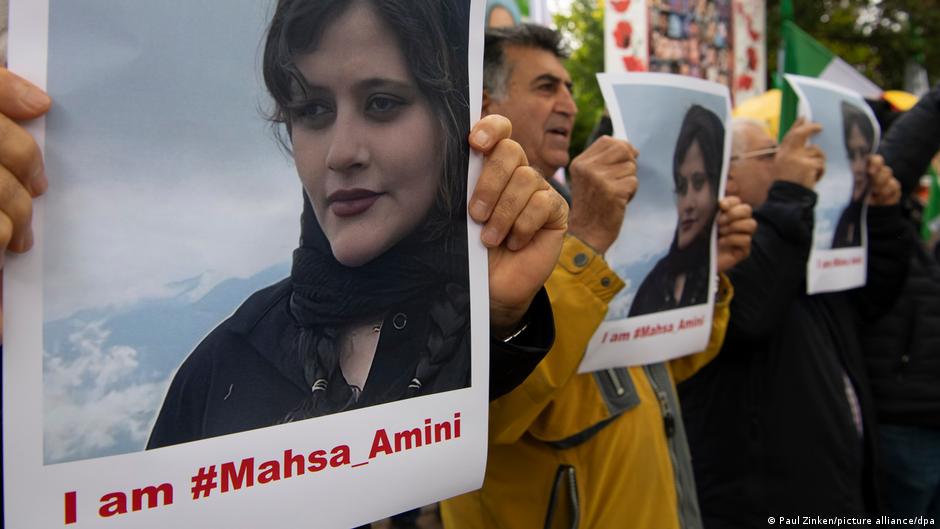Although the protests that have been taking place in Iran since September 16 are related to essentially a domestic issue – the death of a young woman in the custody of the morality police- it is noteworthy that the regime has tried to present them in a different light, accusing the protestors of serving foreign agendas. The protests spread to several cities and areas in Iran, far from their origin in Kurdish areas, reaching the capital Tehran. The issues being protested have expanded from the restrictions women and national minorities are subjected to in Iran, to a general condemnation of Iran’s foreign expansionist policy, which comes at the expense of strengthening Iran’s domestic economy.
The regime’s management of this crisis in itself has linked the protests to the wider regional context not only by accusing the protesters of serving foreign agendas, in an attempt to discredit them, but also by conducting attacks against Kurdish armed groups in northern Iraq on September 24th. There are several reasons the domestic and regional aspects of Iran’s politics have become intertwined in this crisis, including:
Growing international attention to the issues of women and national minorities: The current protests are different from previous rounds in that they have received external support. Iraqi and Iranian Kurds staged a protest on September 23 in Erbil, Iraq, in solidarity with the deceased Kurdish Iranian young woman. The protestors gathered outside the UN building in Erbil carried her picture and chanted death to the dictator, in reference to Ayatollah Khamenei. Protestors also gathered in Istanbul, Turkey, where news outlets shared photos of Iranian women cutting her hair in solidarity with Amini. Protests were also held in several Western capitals, condemning the manner in which the authorities in Iran have dealt with the protesters inside Iran.
Those expressing solidarity with the protestors in Iran were of the view that the regime expends important resources on entrenching its regional role rather than addressing domestic issues. They also objected to growing efforts by the regime to pursue Iranian opposition figures abroad, in a manner that has come to infringe on the national security of a number of countries. A recent example was Albania cutting diplomatic relations with Iran on September 7, after it accused the latter of conducting cyber-attacks against a conference held by Iranian opposition figures in Albania, as well as some Albanian government agencies.
The underlying reasons for the protests: The recurring outbreak of protests in Iran reflects the fact that there are strong and persistent economic, social and political factors that are driving popular discontent. A segment of the protestors view repeated protests as the outcome of the regime’s policy, especially exhausting economic and military resources in supporting regional proxies , while allowing economic and social problems at home to go unaddressed, and therefore to deteriorate. These problems were exacerbated by the reapplication of US sanctions, the COVID-19 pandemic, and lately the Russian Ukrainian War.
Growing condemnation for the role of the IRGC: Although the IRGC have been careful not to directly intervene in the issue of protests, until now at least, the protestors have strongly condemned its regional role, and the toll it exacts domestically. Protestors blame this external role for provoking regional actors, leading them to carry out assassinations and intelligence operations against Iranian military and nuclear personnel, as well as cyber-attacks against nuclear facilities inside Iran.
Accusing the protestors of carrying out foreign agendas: It was noticeable that the Iranian military and media quickly adopted the narrative of a conspiracy theory, which they had done in previous protests. This narrative built on the attention given to these protests by foreign powers, such as the US, especially as the protests coincided with difficulties in reaching an agreement in Vienna. This was reflected in the statement issued by the Iranian military on September 23rd, which argued that these “desperate acts”, the protests, were part of the enemy’s strategy to weaken the Iranian Islamic regime.
Attacks on northern Iraq: The IRGC artillery attack on positions of the armed Kurdish groups in northern Iraq on the 8th day of the protest appear aimed at confirming this narrative of a foreign agenda. The regime is trying to promote the idea that the actors carrying out this foreign agenda include minority forces such as the Kurds, and opposition groups active abroad, such as Mujahidin Khalq, which have been focusing their campaign on human rights violations, as well as the threats posed by reaching a new deal in Vienna.
In conclusion, it can be argued that the most salient fact revealed by these latest protests in Iran is the completely divergent views between the regime and the Iranian people regarding what should be the nation’s priorities. The protesters aim to push for more attention to the deteriorating social and economic domestic conditions, while the regime is doubling down on its current policy of regional entanglements. As both domestic and foreign policies are likely to meet with mounting pressures in the near future, Iran appears heading for difficult times on many fronts.


